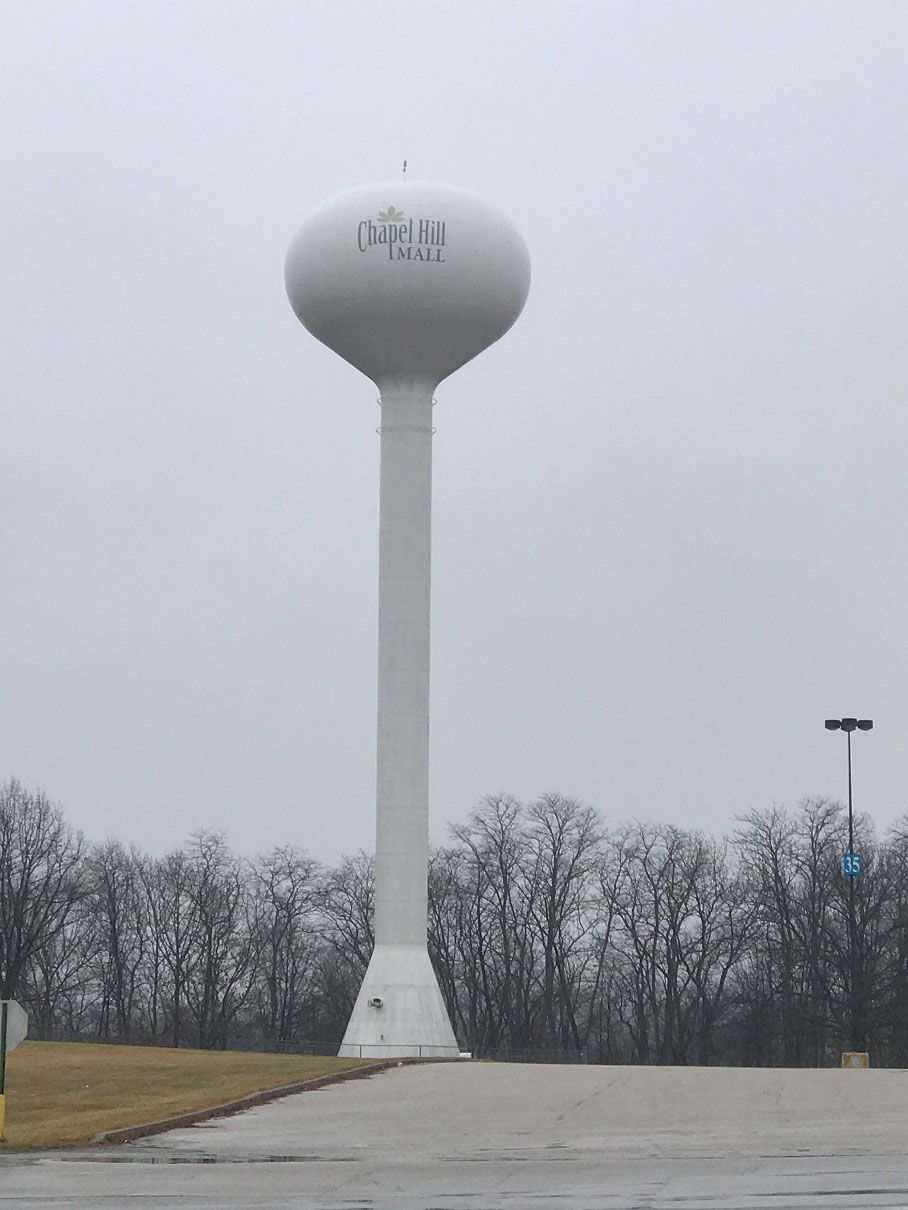AKRON, Ohio — The city of Akron is attempting to breathe new life into Chapel Hill Mall through a proposed redevelopment plan and rezoning that could offer the flexibility to attract new businesses.
The Chapel Hill Redevelopment Plan was presented to Akron City Council this week, with the Akron Planning Commission’s approval, and public hearings were held.
Under the plan, the mall could be redeveloped as a larger project, or divided into parcels for several redevelopment projects, said Akron Planning Director Jason Segedy.
Developers also could be awarded tax increment financing for improvement projects as part of the plan, the city said.
Some City Council members appeared amenable to the mall’s redevelopment, although council put the plan on hold for further discussion.
Councilman Phil Lombardo of Ward 2, which houses the mall, said he will poll his constituents in his upcoming newsletter to learn what kinds of business they would like to see in their ward.
He also plans to find out from potential developers what redevelopment could mean for the existing businesses at the mall, he said.
“Obviously, we want something that would serve the community and draw people there,” Lombardo said.
Built in 1967, Chapel Hill Mall on Brittain Road spreads across 72 acres in North Akron and is bordered by both Cuyahoga Falls and Tallmadge. The buildings on the site occupy 22 acres and mall parking covers another 50 acres, the city said. The site is surrounded by heavy residential development, intermixed with retail, schools and churches.
Although the mall was a popular destination for decades, like malls across the country, Chapel Hill began to fail, when its anchor stores - Sears, Macy’s and JCPenney – began to close in 2016. Now, only 20 of the mall’s 75 storefronts are occupied, the city said.
Last year, mall owner Michael Kohan of New-York-based Kohan Retail Investment Group, was beleaguered with high, unpaid utility bills, causing the city and Ohio Edison to threaten water and electricity shut off, negatively affecting the mall’s remaining small businesses.
In October, the Summit County Fiscal Officer filed a foreclosure complaint against the Kohan Group, for unpaid taxes.
During City Council’s Planning and Economic Development Committee meeting, Jeff Martin, of Solon-based Industrial Commercial Properties (ICP), told committee members his company is contracted to buy the majority of the mall property from the Kohan Group, except for Storage of America, which in 2018 moved into the space Macy’s formerly occupied at the north end of the mall.
ICP currently owns the former Sears property on the south end of the mall. That space is planned to house a cabinet-manufacturing and distribution center, which is not yet in operation, the city said.
“We appreciate the collaborative effort that we've had with the planning staff and, the entire city of Akron as we've been working to help create a unique zoning district that will set this property up for future success,” Martin said. “We have, I think, a great opportunity here to take a kind of long, distressed asset and really turn it around and bring life back to the Chapel Hill Mall area.”
Thomas Fitzpatrick, representing Storage America, told the committee his company had not been included in the city’s discussions regarding the redevelopment plan.
“We're all for this whole thing because I think it's way overdue. And we're willing to work with the city and do that. But nobody had asked us for any input on what our future plans are for the property,” he said. “We do own a, you know, substantial part of the parking lot on the north side as well.”
In a letter to City Council, Fitzpatrick asked whether the city of Akron would be responsible for a water tower and its water lines, which are situated at the northern edge of the mall property on land technically owned by Cuyahoga Falls. That issue was not addressed by City Council.

The redevelopment plan before City Council requires the property to be rezoned from a retail business district to a unified planned development district, Class UPD-49, which allows certain types of commercial, retail and residential operations.
Both ICP’s cabinet business and Storage America required conditional use zoning approval to begin operations at the mall because they are considered commercial under Akron’s Zoning code. The mall and its anchor businesses were originally zoned for retail.
However, some types of businesses are not permitted under the city’s rezoning plan, including:
• Auto sales, body and fender repair shops
• Used tire sales
• Trash hauling businesses
• Kennels
The plan also sets forth a series of standards new businesses would be required to comply with, such as no manufacturing, crating or uncrating processes allowed outside the buildings.
New operations also would have to be free of fumes, smoke, dust and noise. Height restrictions and storefront cladding are also detailed in the new plan.
The city cites several objectives in the mall’s redevelopment plan.
In addition to putting the mall to good use by generating jobs, stimulating investment in the area and bringing vibrancy back to North Akron, the city would like the massive parking area redeveloped or possibly made into green space.
The city proposal also indicates it would like to see green building used, along with improved lighting and landscaping.
City Council is expected to vote on the proposal at its Feb. 22 meeting.



